Yesterday, I got back from a two day trip to Amsterdam. Here are the reflections of a stubborn Englishman on a trip to a truly progressive city.
Location and Background
Background
I thought it might be useful to explain why we were visiting Amsterdam in the first place. A friend of ours called Kiran recently got onto the internship program at a company called Optiver (which translates literally as “options trader” in Dutch). The company is based in Zuid, Amsterdam and so Kiran was put up in a hotel in the city with the other interns. He offered to have us over for a couple of days to take a look at the city while he was there.
Despite the company being based in Zuid, the hotel they put us up in was actually in the North, so we had plenty of chances to try out the public transport and go exploring along the way.
Location
Being from the UK, when I think of a ‘city’, my mind instantly conjures up the image of a London-esque rabbit warren - densely packed streets filled with uncountable numbers of people and vehicles.
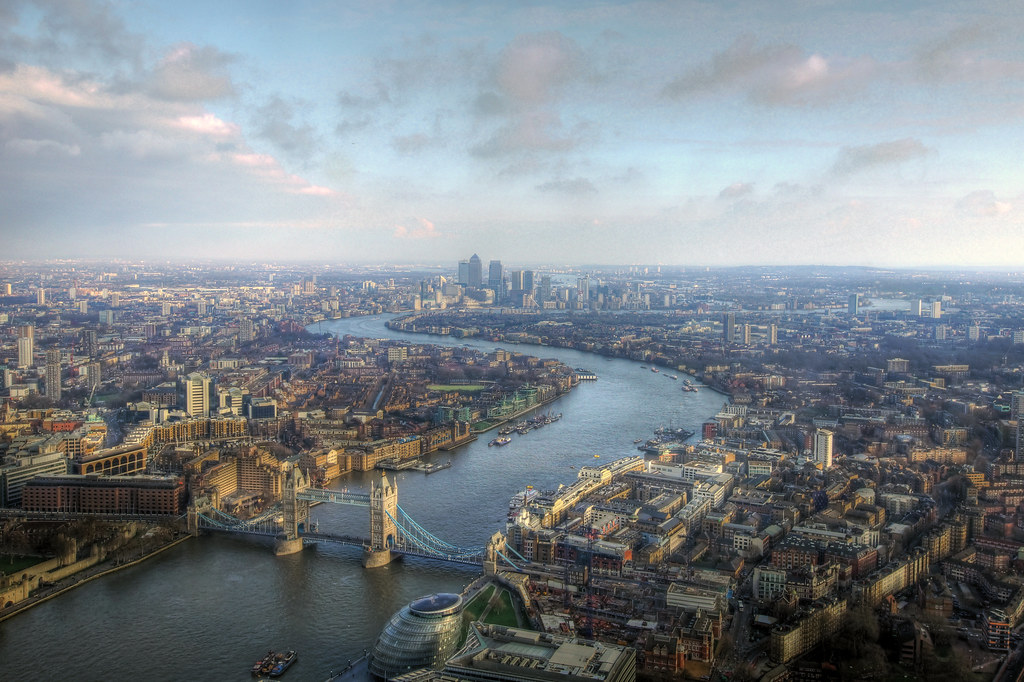
An illustration of the sheer density of London. Empty or green space is hard to come by!
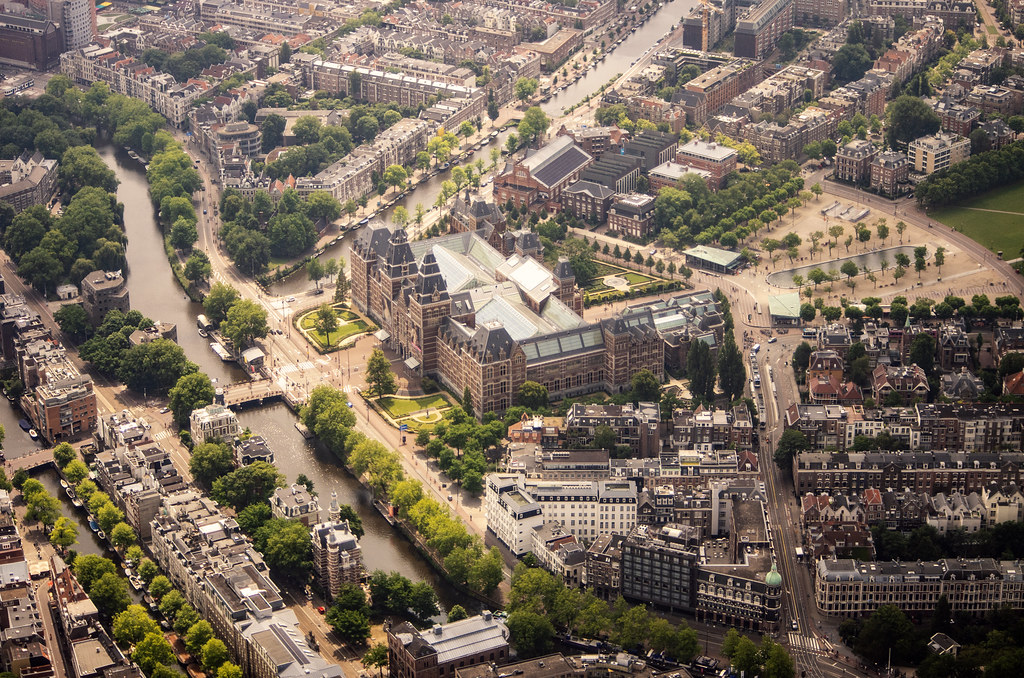
Compare this to parts of Amsterdam and the difference is clear
Owing in part to the generous borders on what constitutes as ‘Amsterdam’, many parts of the city are actually very sparse. Despite being clearly developed, the vestiges of natural landscape remain, as opposed to having been hammered into whatever shape is needed as is so often the case in other cities.
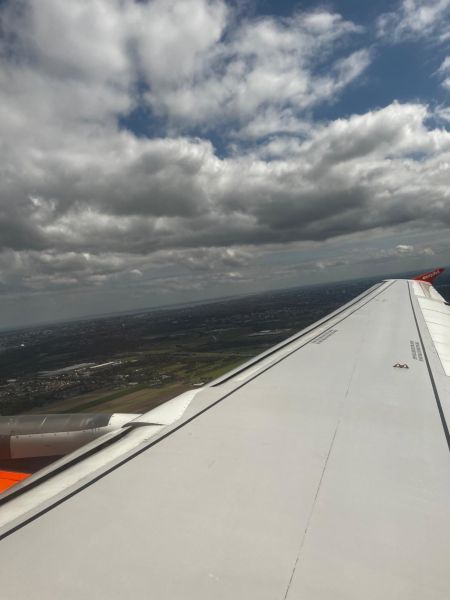
A shot over the plane wing on final approach into Schiphol. Although this is a little way out of the city centre, the characteristic landscape can still be seen represented in the upper left of the image.
To be completely fair, the parts of Amsterdam bordering on the canals (De Wallen in particular) are just as dense, if not more so, than London. I suppose a better point would probably be to point out that urban sprawl doesn’t appear to compromise the natural surroundings.
Architecture
I think it’s fair to say that the Dutch take great pride in their public architecture.
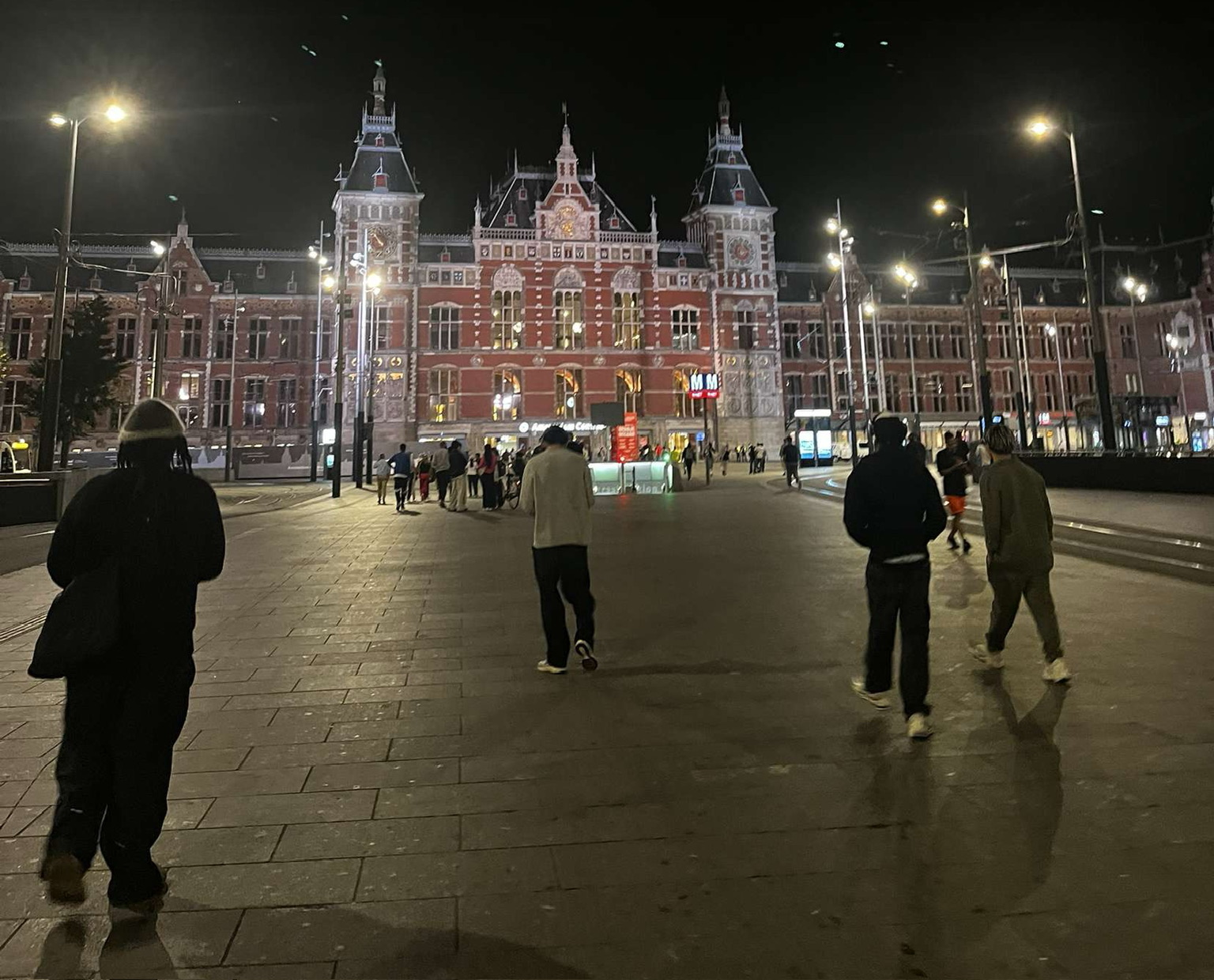
Believe it or not, this is a train station!
Buildings which, at least in the UK, would otherwise likely be utilitarian or brutalist, are, in fact, often much more beautiful than they have any right to be. It is clear that, despite the infrastructure being clearly designed for efficiency above all, corners were not cut in the aesthetics department as a result.
Religious buildings are a particularly beautiful part of the city, being some of the tallest buildings on the skyline. Ancient churches stand amongst modern ones against the sky without any particular contrast in styles.
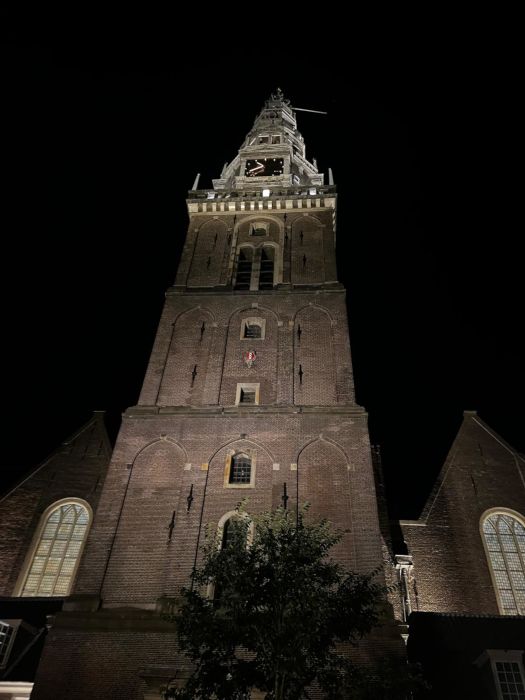
Oude Kerk - a 14th century church in the centre of the city. Ironically, stands essentially in the middle of the red light district.
Houses (particularly canal-front ones) are well known to be taller than they are wide as a result of an old Dutch tax policy. This leads to the characteristic “canal house” look.
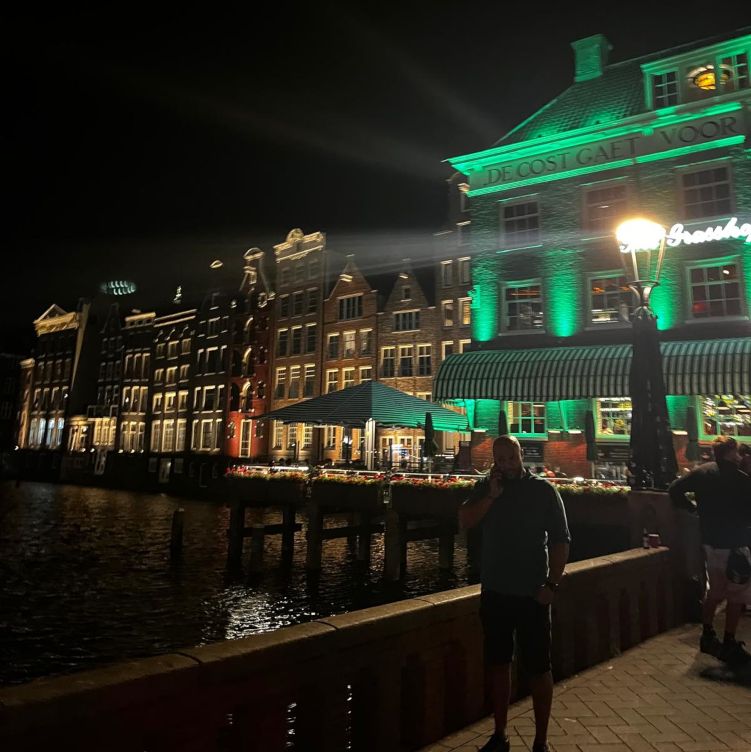
A nice line of quintessential canal houses outside The Grasshopper in Binnenstad. Notice the odd geometry of the houses that face the water on the left.
Transportation
The transport system in Amsterdam is really quite something to witness.
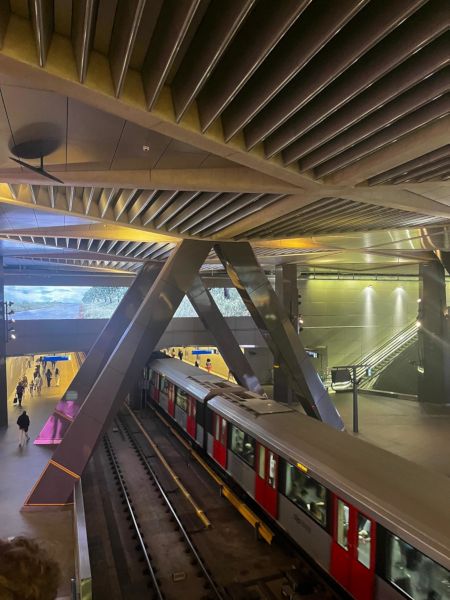
An underground station. I can’t remember if this is De Pijpe but I have a feeling it is.
The underground in Amsterdam is very simple. If I remember rightly, it only consists of three (perhaps four?) lines.
The vast majority of the time, travelling via tram is the best way to go - it is cheap; isn’t overcrowded; and can get you to practically anywhere within the city (and, indeed, to some places outside of it). The tram system is genuinely impressive too, with most streets being embedded with a delightfully intricate network of rails.
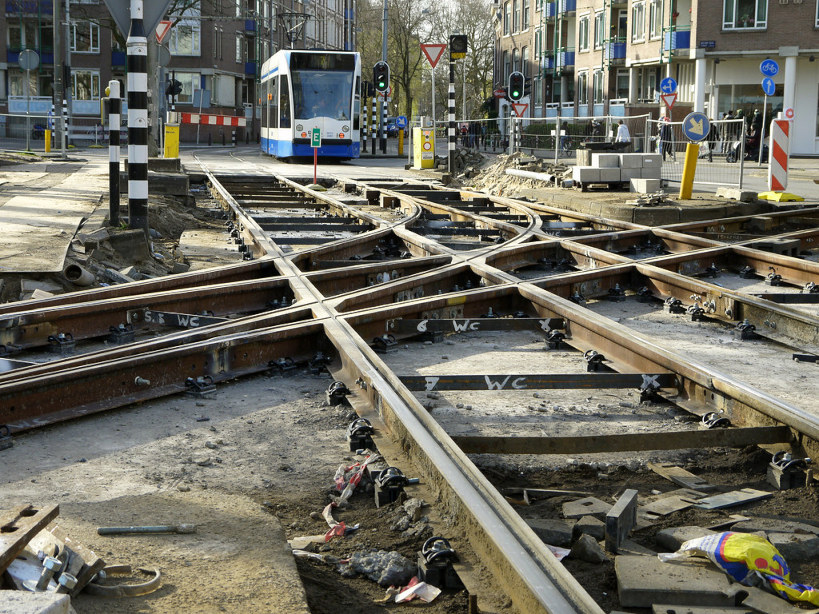
Amsterdam tram line junction undergoing repair. Not our photo - source
The trams are also very clean and everybody is extremely polite. There are even little signs to remind you to not play music out loud or talk too loudly on the phone - which, as you can imagine, appeals very well to the English sentiment. Each tram is equipped with a customer service desk in the middle of the tram also, which was quite a funny concept to me at first. It, in fact, turns out to be very helpful. The attendant also has a tannoy that he can use to let people know about disruptions or special instructions - and of course to tell you off for breaking the rules!
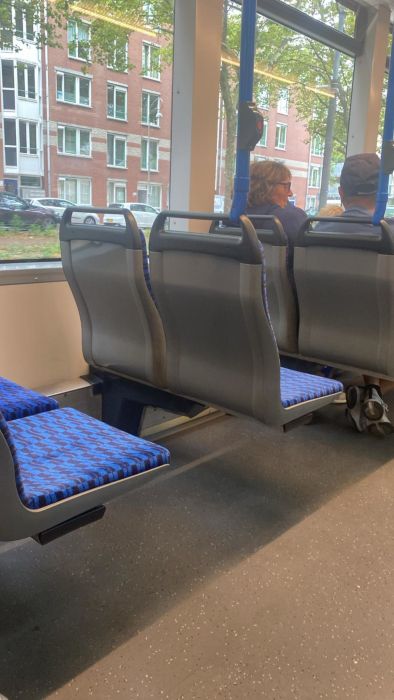
A typical tram interior
People and Culture
I don’t think another post is needed raving about the culture in Holland. Instead, I thought it would be useful to comment on the attitudes toward the city’s less “desirable” parts.
To start with, there is a prevailing dislike of tourists in Amsterdam who come to simply smoke cannabis, drink and/or solicit prostitutes.
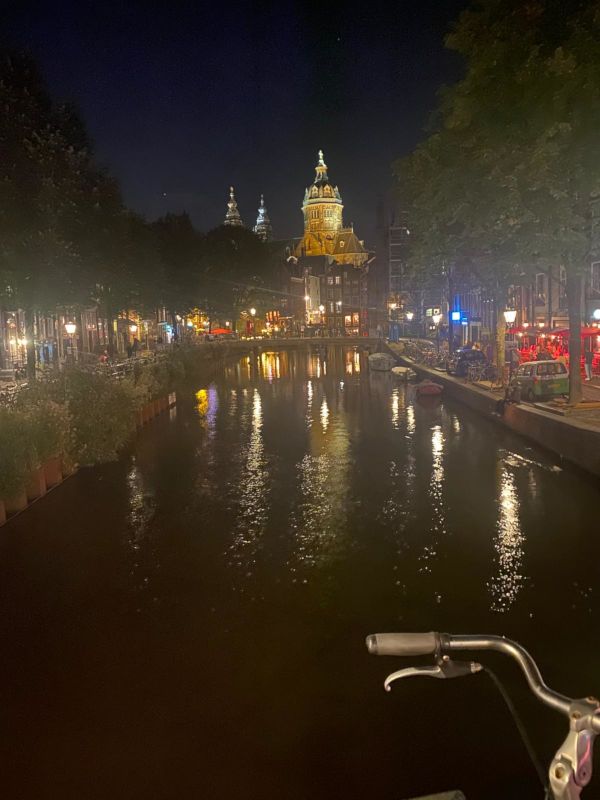
A photo of a canal in the centre of Amsterdam as we head toward the red light district (visible on the right). At night, the red light district is absolutely filled with tourists.
Despite the foreign view of Amsterdam being a sort of “hippie paradise”, this isn’t entirely true. Although cannabis possession is not a criminal offense, public smoking still is and carries a 100 EUR fine if caught. Obviously, no criminal record or anything, but we saw a couple of on the spot fines being issued while there.
There is also quite the focus on public decency. When we first landed in Schiphol, Ishaan and I were waiting at a pedestrian crossing. Ishaan saw that nothing was coming and just crossed despite the signal not to cross still being visible. This caused some audible tutting from the Dutch standing around us. Incidentally, this was what tipped me off not to cross with him! The large crowd of presumably busy people were perfectly content to stand around and wait for the green crossing signal simply because that’s what is considered right.
Public places are incredibly well maintained, and it wasn’t uncommon to see ordinary people sweeping the street or picking up litter outside their house for no reason other than to make it a bit nicer to live there for everyone. According to one of our tour guides, it used to be very common to urinate in the canals. Following a push by the Dutch government to improve the water quality, free public toilets were installed and people have used them consistently ever since. It is considered wrong to not do so. There is an annoying phenomenon in Holland of private toilets in buildings such as cafes requiring payment to use. This is basically to take advantage of tourists who don’t want to use the toilets outside.
Environment and Nature
Something which struck me almost instantly upon arrival was that pretty much every street has a nice line of greenery down it. This was usually placed between the cycle lane and the road.
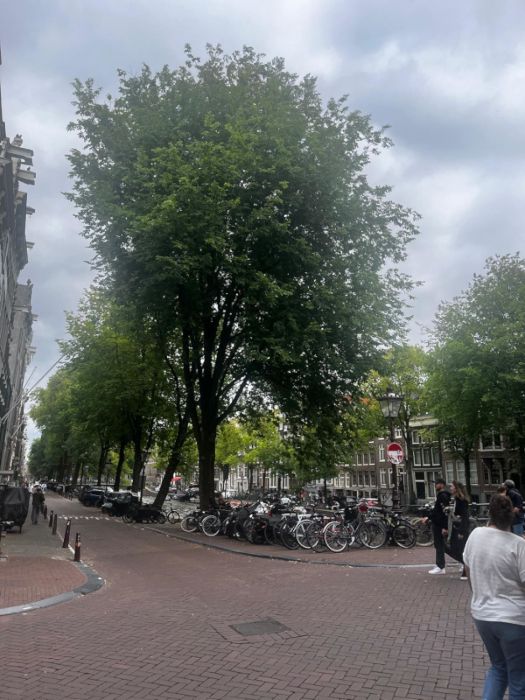
A nice, tree line bordering on a canal. This sort of thing seems to border most roads in Amsterdam which have space for it. It becomes less common in more heavily built up areas.
Most people in Amsterdam will cycle to get to their destination. Of those that don’t cycle, many own electric cars and most will use public transport for short journeys. Something funny I noticed while there was that some people own tiny cars which are able to fit into cycle lanes. Apparently, these are legally permitted to use them and so get stuck in traffic much less, while also being exempt from certain taxes. It reminded me of the Reliant Robin in Britain.
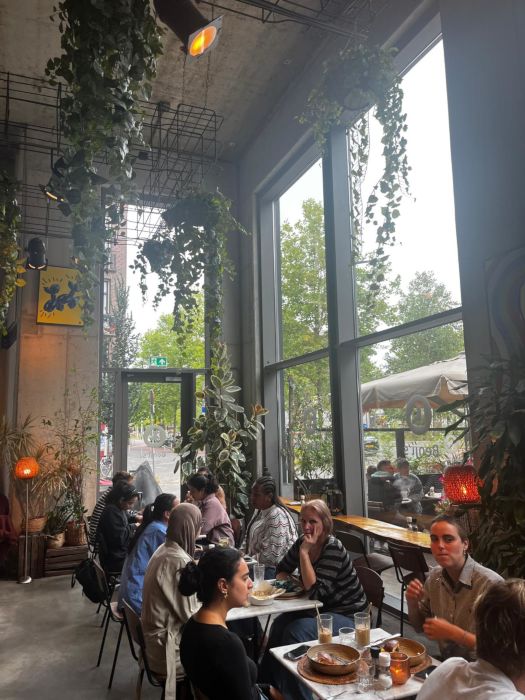
In a cafe called Benji’s in Wibautstraat. The nice, tree-framed street is visible out of the window nicely complementing the greenery of the insides.
All photographs in this post were either taken by me or Ishaan Aravind. They can be considered CC BY-NC-SA 4.0.